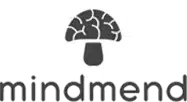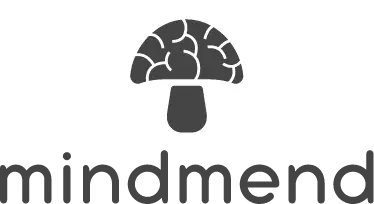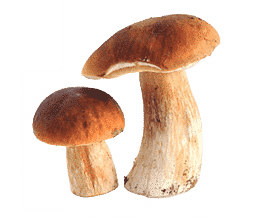
What Psilocybin Does to the Brain
Have you heard whispers about “magic mushrooms” and their potential to unlock the mind? The key ingredient in these fungi is psilocybin, a naturally occurring psychedelic compound that’s sparking a wave of scientific interest.
Psilocybin research is experiencing a renaissance. After decades of being a Schedule I controlled substance (meaning high potential for abuse and no accepted medical use), scientists are taking a fresh look at its potential to treat various mental health conditions.
From alleviating depressive symptoms and anxiety to aiding in addiction recovery, psilocybin’s therapeutic possibilities are captivating researchers and the public alike. However, it’s important to remember that psilocybin use can have risks and should be approached with caution.
Key Takeaways
The trippy effects aren’t from psilocybin itself. Once ingested, our body converts psilocybin into psilocin, which is the real culprit behind the altered states of consciousness experienced during a psilocybin trip.
Psilocin disrupts the brain’s usual messaging by mimicking serotonin and fitting into serotonin receptors. This, particularly in the default mode network (our inner critic), can lead to increased connection between brain regions that don’t normally talk to each other, explaining the unique experiences and potential for new perspectives.
Research suggests psilocybin-assisted therapy might be helpful for conditions like treatment resistant depression and PTSD. However, there can be side effects and bad trips, so responsible use with professional guidance in a controlled setting is crucial.
How Psilocybin Interacts with the Brain
The psilocybin trip starts with ingestion. Once you consume magic mushrooms containing psilocybin, it embarks on a journey through your digestive system. This might seem uneventful, but it’s where the magic begins – or rather, the transformation.
Converting Psilocybin to Psilocin
Psilocybin itself isn’t psychoactive. Think of it like an inactive ingredient waiting to be activated. Here’s where your trusty liver comes in. It acts like a chemical factory, breaking down psilocybin and converting it into psilocin, the true mastermind behind the mind-altering effects. This conversion process is relatively quick, happening within minutes of ingestion.
Psilocin and the Brain: What's Happening?
Psilocin then enters the bloodstream and makes a beeline for the brain. Imagine the brain as a vast network of communication channels. Neurons, brain cells, use chemical messengers called neurotransmitters to talk to each other. Psilocin, with its sneaky disguise, mimics one specific neurotransmitter – serotonin.
Serotonin plays a crucial role in mood, perception, and learning. By mimicking serotonin, psilocin disrupts the brain’s usual messaging patterns. It essentially throws a wrench into the well-oiled communication machine, leading to the altered states of consciousness experienced during a psilocybin trip.
The Brain on Psilocybin: Key Effects
Psilocybin’s interaction with serotonin receptors in the brain ignites a cascade of effects, leading to a truly unique mind-altering experience. Let’s delve into some of the key changes psilocybin can induce:
Altering Perception: Visual and Auditory Changes
One of the most striking effects of psilocybin is its ability to alter perception. People often report visual distortions, seeing objects with enhanced colors, sharper outlines, or even experiencing hallucinations. Sounds might also take on a new dimension, becoming more vibrant or distorted.
Enhanced Emotions and Mood Shifts
Psilocybin can have a profound impact on emotions. Feelings of euphoria, deep connection, and a heightened sense of well-being are common. However, the emotional journey isn’t always smooth sailing. Anxiety, fear, and even paranoia can arise, especially at higher doses.
Mystical Experiences and Altered Consciousness
Perhaps the most intriguing effect of psilocybin is its ability to induce mystical experiences. People often describe feelings of unity with the universe, a sense of ego dissolution (losing the sense of self), and profound insights into their own existence. These experiences can be deeply meaningful and leave a lasting impact.
It’s important to remember that these effects are highly subjective and vary depending on factors like dosage, set (emotional state), and setting (environment). Some users may experience a combination of these effects, while others might have a more focused experience.
Digging Deeper
We’ve established psilocin’s trickery – mimicking serotonin to disrupt brain function communication. But how exactly does it achieve this? Imagine neurons as brain cells with docking stations for neurotransmitters.
These docking stations are called receptors, and serotonin has its own specific type – the serotonin receptor. Psilocin, with its similar structure, acts like a key fitting into the serotonin receptor’s lock. However, psilocin isn’t a perfect fit.
It acts as a partial agonist, meaning it unlocks the receptor but doesn’t fully activate it like serotonin would. This partial activation is believed to be a key player in psilocybin’s effects
Connectivity Changes in the Brain
The brain is a complex network of interconnected regions constantly communicating. Psilocybin’s influence on serotonin receptors disrupts this usual flow of information.
Studies suggest psilocybin can decrease neural activity in the default mode network (DMN). The DMN is a group of brain regions active when we’re daydreaming or lost in self-referential thoughts.
By quieting the DMN, psilocybin may allow for increased communication between other brain systems that wouldn’t normally interact. This altered connectivity is thought to contribute to the unique experiences associated with a psilocybin trip, such as feelings of interconnectedness and a break from usual thought negative thinking patterns.
The Default Mode Network: What's Changing?
The DMN is like our brain’s internal chatterbox, constantly ruminating on thoughts about ourselves, the past, and the future. Psilocybin, by quieting this chatter, may allow for a more present and open-minded state.
Imagine stepping outside a noisy room and suddenly noticing the symphony of sounds you were previously oblivious to. This disruption of the DMN might explain why psilocybin can sometimes lead to increased creativity and a sense of connection to the world around us.
Therapeutic Potential: Beyond the Trip
The mind-altering effects of psilocybin are fascinating, but the real intrigue lies in its potential to go beyond the trip and offer therapeutic benefits. Research is exploring how psilocybin can be harnessed to address various mental health challenges.
Mental Health Benefits: Depression, Anxiety, PTSD
Psilocybin has shown promise in treating some of the most common mental health struggles. Studies suggest it may ease symptoms of major depressive disorder and anxiety, particularly in individuals with treatment-resistant conditions.
For conditions like Post-Traumatic Stress Disorder (PTSD), psilocybin-assisted therapy seems to hold particular promise. Psilocybin’s ability to induce introspection and emotional processing might help individuals confront traumatic memories and develop healthier coping mechanisms.
Enhancing Creativity and Problem-Solving
The disruption of usual brain activity patterns by psilocybin might have benefits beyond treating mental health conditions. Some research suggests psilocybin can enhance creativity and problem-solving abilities. By quieting the inner critic and fostering new connections between brain networks, psilocybin might allow individuals to approach challenges from fresh perspectives and generate innovative solutions.
Long-Term Changes and Positive Effects
The effects of psilocybin therapy may extend far beyond the immediate experience. Studies suggest psilocybin can lead to long-term positive changes in mood, well-being, lower blood pressure and overall outlook on life. This lasting impact could be due to the rewiring of neural connections or a shift in how individuals perceive themselves and the world around them.
It’s important to remember that psilocybin therapy is still under investigation and should only be conducted under the supervision of qualified professionals in a controlled setting. However, the potential benefits for mental health and overall well-being are a cause for excitement.
Risks and Considerations
While psilocybin holds promise for therapeutic applications, it’s crucial to acknowledge the potential risks and considerations before diving in.
Potential Side Effects and Risks
Psilocybin, despite its generally safe profile, can come with some unwanted side effects. These can include nausea, vomiting, dizziness, and muscle weakness. More concerning are the psychological risks, particularly “bad trips” characterized by intense anxiety, fear, and even paranoia. These experiences can be very distressing and highlight the importance of proper preparation and support.
The Importance of Set and Setting
“Set” refers to your mental and emotional state before a psilocybin experience. Going into a trip feeling anxious or depressed can significantly increase the risk of a bad trip. “Setting” refers to the physical and social environment where you consume psilocybin. A safe, supportive, and comfortable setting is crucial for a positive experience.
Responsible Use and Harm Reduction
If you’re considering using psilocybin, responsible use and harm reduction are paramount. Here are some key points to remember:
Start low, go slow: Begin with a low dose of psilocybin and gradually increase if desired. This allows you to assess your individual tolerance and minimize the risk of overwhelming experiences.
Mind your set: Ensure you’re in a good headspace before embarking on a psilocybin journey.
Choose your setting wisely: Surround yourself with trusted companions in a safe and comfortable environment.
Seek professional guidance: Psilocybin therapy, conducted by qualified professionals, can provide a safe and controlled setting to explore its potential benefits.
Respect the power: Psilocybin is a powerful tool, not recreational psychedelic drugs. Approach it with respect and caution.
Remember, psilocybin research is ongoing, and its long-term effects are still being explored. If you have any underlying mental health conditions, it’s crucial to consult with a healthcare professional before considering psilocybin use.
Final Thoughts
Our exploration of what psilocybin does to the brain has unveiled its fascinating journey from a molecule in magic mushrooms to a potential therapeutic tool. We’ve seen how psilocybin transforms into psilocin, the true psychoactive agent, and how it disrupts human brain communication by mimicking serotonin through blood oxygenation level dependent and functional magnetic resonance imaging. This disruption, particularly in the default mode network, leads to the unique and sometimes profound experiences associated with a psilocybin trip.
Psychedelic research involved extensive psychological support. As we delve deeper into its mechanisms and potential applications, the responsible exploration of psilocybin could lead to new avenues for healing and personal growth. The future of psilocybin is one filled with both promise and caution, a reminder that powerful tools demand respect and responsible use.




